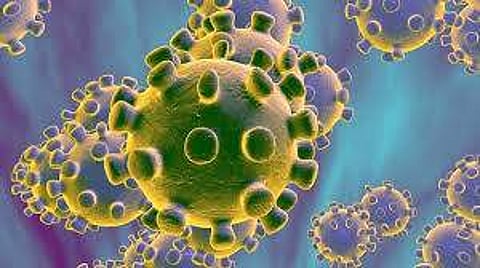

Scientists have assessed the symptoms of COVID-19 in children and found that in contrast to observations in adult patients, pediatric cases showed a higher proportion of fever, vomiting, and diarrhea on admission. The study, published in the journal PLOS Medicine, analysed the clinical characteristics of 34 pediatric patients with COVID-19 in four hospitals in China from January 27 to February 23.
According to the researchers, including Xihui Zhou of the First Affiliated Hospital of Xi'an Jiaotong University in China, while these features of the disease have been established in adults, information on pediatric patients is limited. They believe this knowledge could facilitate early identification and intervention in suspected patients. Zhou and his colleagues addressed this gap to provide insight into the early diagnosis and assessment of COVID-19 in children. Based on their analysis, the researchers said the study participants presented with mild (18 per cent) or moderate (82 per cent) forms of COVID-19, and the most common initial symptoms were fever (76 per cent) and cough (62 per cent), which recovered within three or four days after treatment.
In contrast to observations in adult patients, pediatric cases showed a higher proportion of fever, vomiting (12 per cent), and diarrhea (12 per cent) on admission, the study noted. Chest computed tomographic (CT) X-ray scans revealed high-density patchy shadows with a late-onset pattern in 28 patients (82 per cent), the scientists said. By contrast, they said, only 3 per cent of pediatric patients showed features called ground-glass opacities in their lungs.
The researchers said these hazy opacities do not obscure the underlying lung structures or blood vessels, which are typically seen in adults with COVID-19. They said the clinical manifestations were not as severe as the signs observed in the CT scan images, adding that the recovery of small injuries in their lungs lagged behind that of the main symptoms. Citing the limitations of the study, the researchers said their analysis was limited by a small sample size, and a lack of dynamic detection of inflammatory markers in the patients.
But the scientists believe that the specific clinical features in children infected with the novel coronavirus should be given more attention when physicians are dealing with suspected cases. From the study, the scientists could not find direct evidence regarding the transmission from children to adults. However, they said the risk of family cluster transmission from children harbouring the virus should be taken into consideration in policy making for epidemic control. According to the scientists, the findings offer valuable insight into the early diagnosis and epidemic control of COVID-19 in children.
